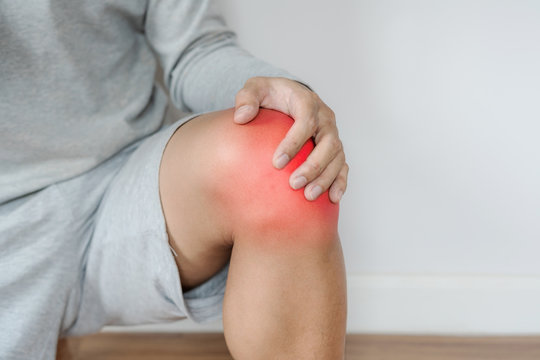Tips to Manage Joint Pain in Winter

What Causes Joint Pain to Worsen in Winter?

1. Cold Temperatures and Reduced Blood Flow
During winter, cold temperatures cause blood vessels to constrict, reducing blood flow to the joints and surrounding tissues. This reduced circulation can make joints feel stiff and painful, especially in individuals with arthritis or other joint-related conditions.
2. Increased Sensitivity to Barometric Pressure
Changes in barometric pressure, which are common during colder months, can lead to swelling and inflammation in the joints. People with joint issues often report that their symptoms worsen as atmospheric pressure drops, causing the joints to feel achy and tight.
3. Lack of Physical Activity

Winter weather often discourages outdoor activities and exercise. A sedentary lifestyle during colder months can lead to reduced joint mobility and increased stiffness, making joint pain more noticeable. Regular movement is essential to maintain joint flexibility and reduce discomfort.
4. Thicker Synovial Fluid
The synovial fluid in our joints acts as a lubricant, ensuring smooth movement. In colder temperatures, this fluid can thicken, reducing its ability to cushion the joints effectively. This change can lead to increased friction and pain in the joints.
5. Seasonal Depression and Stress
Seasonal affective disorder (SAD) and stress are more common in winter, and both can amplify the perception of pain. Emotional well-being plays a significant role in physical health, and joint pain may feel more intense during periods of stress or low mood.
Who Is Most Affected by Joint Pain in Winter?
- Individuals with arthritis (osteoarthritis or rheumatoid arthritis)
- People with past joint injuries
- Those with chronic inflammatory conditions like fibromyalgia
- Older adults
Tips to Manage Joint Pain in Winter
1. Stay Warm

Keeping your joints warm is one of the most effective ways to manage winter joint pain. Cold weather can worsen stiffness, so wear thermal or layered clothing to maintain body heat. Woolen gloves, scarves, and warm socks can protect your extremities, where cold is felt most intensely. Using heating pads on painful areas or soaking in a warm bath not only alleviates pain but also promotes relaxation. Electric blankets can also provide continuous warmth while you rest.
2. Stay Active Indoors

Staying physically active in winter is crucial to prevent joint stiffness and maintain flexibility. Simple indoor exercises like yoga, Pilates, and stretching routines are excellent for improving joint mobility. Low-impact aerobics, such as cycling on a stationary bike or walking on a treadmill, can enhance blood circulation and strengthen the muscles around your joints. Even household chores, like cleaning or light lifting, can keep your body moving. Avoid prolonged sitting; aim to stand up and stretch every hour.
3. Maintain a Healthy Diet

A nutritious diet plays a vital role in managing joint health, especially during the winter months. Anti-inflammatory foods like fatty fish (salmon, mackerel), walnuts, flaxseeds, and leafy greens (spinach, kale) help reduce joint inflammation. Add colorful fruits and vegetables rich in antioxidants, such as berries, oranges, and bell peppers, to combat oxidative stress. Ginger and turmeric, known for their anti-inflammatory properties, can be included in your meals or taken as herbal teas. Limit sugar, processed foods, and alcohol to avoid triggering inflammation.
4. Use Heat Therapy

Heat therapy is a quick and effective method to reduce joint pain and stiffness during the cold months. Heating pads or hot water bottles can be applied directly to affected joints for immediate relief. Warm baths with Epsom salts can relax muscles, improve circulation, and reduce swelling. Infrared heat lamps are another option to provide deep heat therapy. Make it a routine to use heat therapy after any physical activity to soothe tired joints and prevent stiffness.
5. Stay Consistent with Medications
If you are prescribed medications for arthritis or joint pain, adhering to the treatment plan is essential during winter. Colder temperatures can exacerbate symptoms, making it more important to follow your medication regimen. Over-the-counter pain relievers, such as ibuprofen or acetaminophen, can provide short-term relief during flare-ups. Topical creams with menthol or capsaicin can also help reduce localized pain. Always consult your healthcare provider before making any changes to your medication routine.
6. Consider Supplements
Supplements can be a helpful addition to your winter joint pain management routine. Glucosamine and chondroitin are widely known for supporting cartilage health and reducing arthritis symptoms. Omega-3 fatty acids, found in fish oil supplements, help combat inflammation and improve joint lubrication. Vitamin D supplements are particularly beneficial in winter, as reduced sunlight can lead to deficiencies, potentially worsening joint pain. Consult your doctor to determine which supplements are right for you and the appropriate dosages.
7. Practice Stress Management

Mental health and stress levels have a direct impact on the perception of pain. Winter blues and seasonal affective disorder (SAD) can intensify joint discomfort. Stress-relieving practices such as meditation, deep breathing exercises, and mindfulness techniques help calm your mind and reduce pain sensitivity. Gentle yoga or tai chi combines movement and stress relief, making them ideal for managing joint pain. Engaging in hobbies or spending time with loved ones can also lift your mood and indirectly improve your ability to manage discomfort.
8. Stay Hydrated

Proper hydration is often overlooked in winter, but it is just as crucial as in warmer months. Drinking enough water keeps the cartilage in your joints hydrated and reduces friction between bones. Herbal teas or warm water with lemon can be a comforting way to maintain fluid intake while promoting joint health. Avoid excessive caffeine or alcohol, as they can dehydrate the body and exacerbate joint pain.
9. Wear Supportive Footwear
The right footwear can make a significant difference in managing joint pain during winter. Cold weather can make walking more challenging, especially if the ground is icy or uneven. Choose shoes with good arch support, non-slip soles, and cushioning to reduce the impact on your joints. Adding insoles designed for joint support can provide extra comfort and stability.
10. Get Regular Massage Therapy

Massage therapy can improve blood flow to the joints, reduce muscle tension, and alleviate stiffness. Using essential oils such as eucalyptus or lavender during massages enhances relaxation and adds a warming effect. Self-massage with a warm oil or professional therapy sessions can be a valuable part of your winter joint pain management routine.
If you have any queries related to medical health, consult Subhash Goyal or his team members on this given no +91 99150 72372, +91 99150 99575, +918283060000



